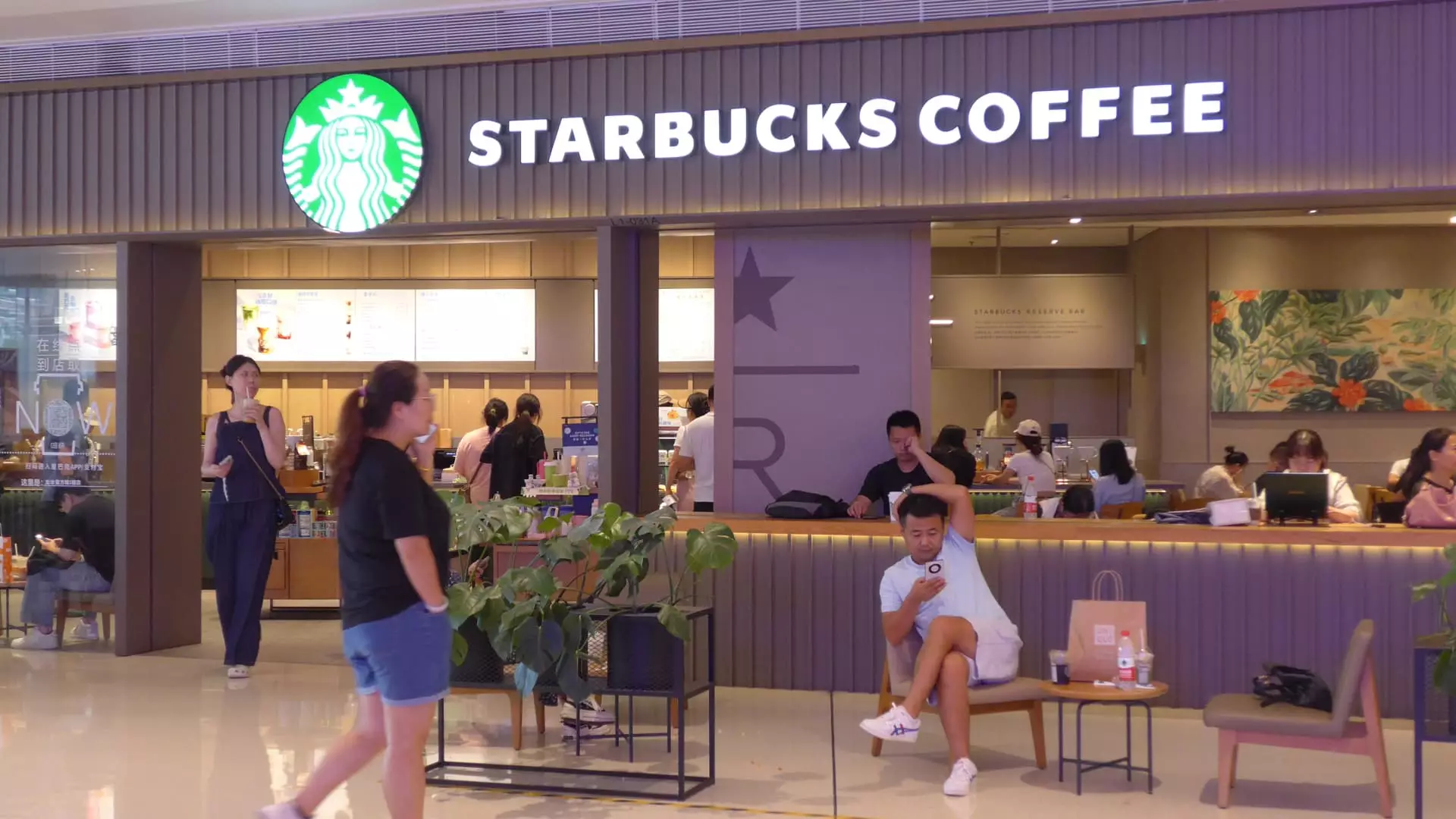In recent discussions regarding Starbucks’ performance, CEO Brian Niccol emphasized the urgent need to comprehend the evolving landscape in China. The fourth-quarter earnings reveal a notable decline in same-store sales, plummeting by 14% as both foot traffic and average customer spending have diminished. Niccol’s decision to visit China signifies a proactive approach to addressing these challenges. By immersing himself in the local market, he hopes to glean insights that could help revitalize Starbucks’ presence amidst escalating competition.
One of the most pressing issues facing Starbucks in China is the rise of local coffee chains. With over 7,300 Starbucks locations operating in the region, the company must contend with an expanding number of homegrown competitors such as Luckin Coffee, Cotti Coffee, and Manner, among others. Despite experiencing significant hurdles, including a scandal that led to its delisting from Nasdaq, Luckin has surged to prominence, boasting over 20,000 stores by the end of the third quarter. These emerging players strategically position themselves as more affordable options for consumers, offering distinct pricing advantages that significantly undercut Starbucks offerings.
For instance, in a market like Beijing, where a small latte at Starbucks costs around $4.22, a customer can opt for a drink at Luckin for only $2.25, Cotti for $1.75, or Manner for $2.11. Such competitive pricing, often complemented by promotional discounts, is reshaping consumer expectations and loyalty, thereby putting pressure on Starbucks to reconsider its pricing strategy and offerings.
The current economic climate in China is characterized by slowing growth, leading consumers to become increasingly price-sensitive. While many wish to maintain a semblance of their previous lifestyles, they also search for ways to save money without sacrificing quality. This economic backdrop presents a significant challenge for Starbucks, as Chinese consumers are abundantly aware of local alternatives that meet their tastes while being easier on their wallets.
Many of the local coffee chains employ creative marketing tactics, often changing their menus to offer unique combinations that diverge from the traditional coffee experience. For instance, drinks that blend coffee with fruit juices or incorporate unconventional ingredients, such as rice and cheese, are becoming trendy. Manner prides itself on local sourcing for its beans, while M Stand and Seesaw are elevating the beverage experience by introducing luxurious options like a latte served in an edible oatmeal cookie cup.
Compounding Starbucks’ challenges is fierce competition in the tea market. Specialty tea shops like ChaPanda and Auntea Jenny present affordable alternatives, often selling tea-based drinks at up to 60% less than Starbucks pricing. For example, Auntea Jenny’s lattes retail for about $2.67, while its competitor Mixue offers drinks for only 56 cents. With the increasing popularity of tea among the Chinese consumer base, Starbucks must acknowledge and strategize against the encroachment of these tea-centric establishments.
Moreover, convenience stores and fast–food chains are now integrating coffee into their offerings, adding further strain on Starbucks’ market share. Time-crunched consumers are opting for grab-and-go coffee from supermarkets and informal dining establishments, making the competitive landscape even more challenging.
In spite of these numerous challenges, Starbucks retains a loyal customer base in China. The brand is often regarded not just as a place to enjoy coffee but as a social hub—establishing itself as a prime venue for both casual meet-ups among friends and business discussions. The consistency in Starbucks’ store ambiance—comfortable seating, engaging interiors, cleanliness, and amiable service—adds to its allure as a favorite meeting point.
Starbucks benefits from its status as an aspirational brand, embodying a lifestyle that many consumers aspire to emulate. However, to maintain this position, Niccol and his team need to innovate and adapt to the rapidly evolving tastes and expectations of the modern Chinese consumer while strategically navigating the intensely competitive market that includes both local and international challengers.
As Niccol prepares for his visit to China, Starbucks faces a pivotal moment. Understanding the nuances of consumer behavior and competitive forces in the region will be critical in shaping the company’s strategic direction and future success in one of its most important markets.

